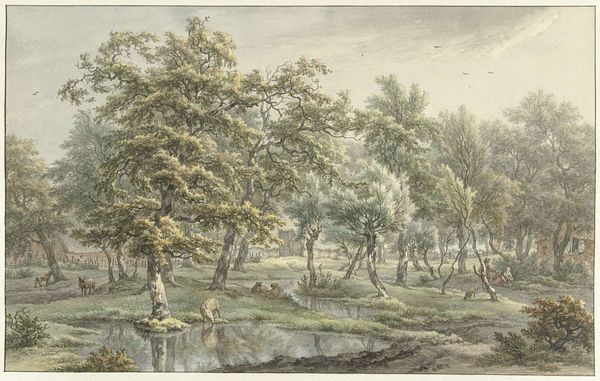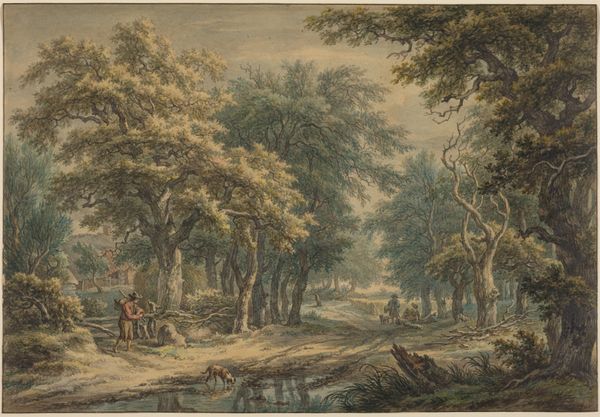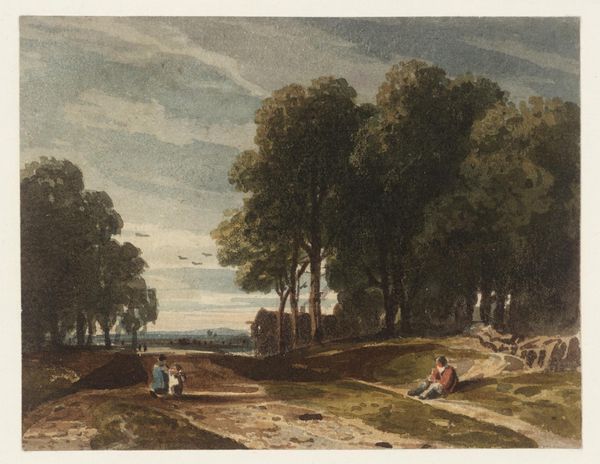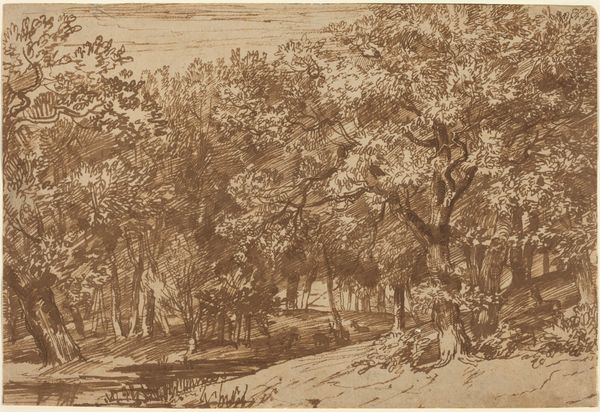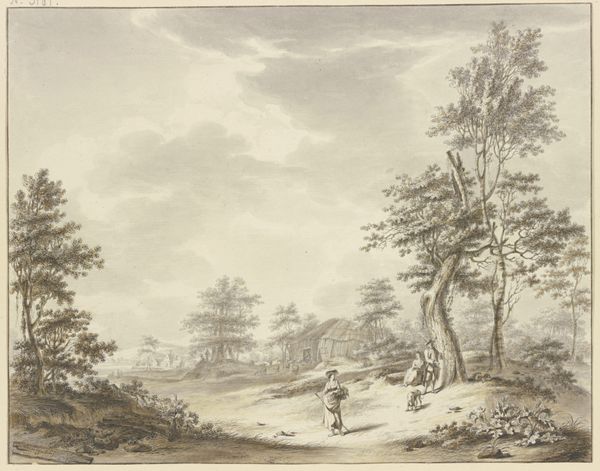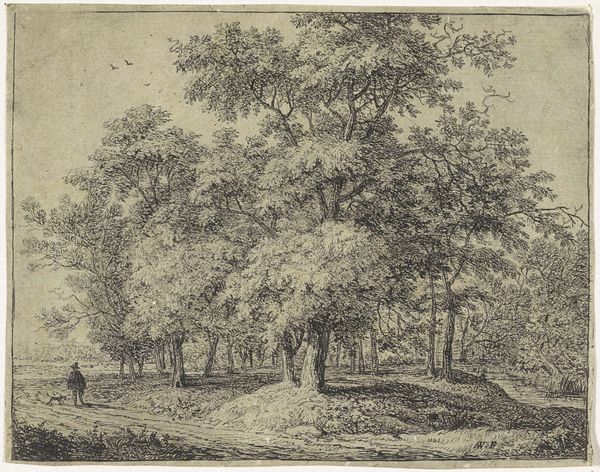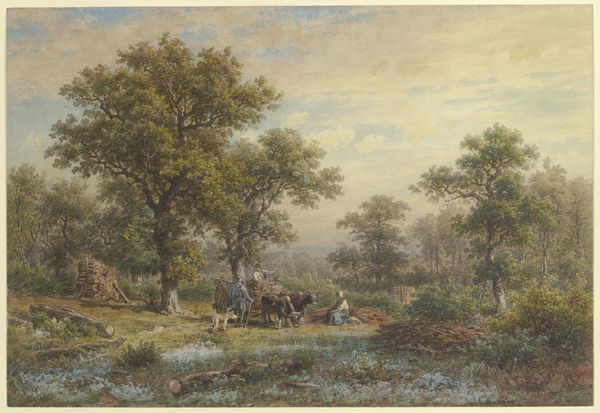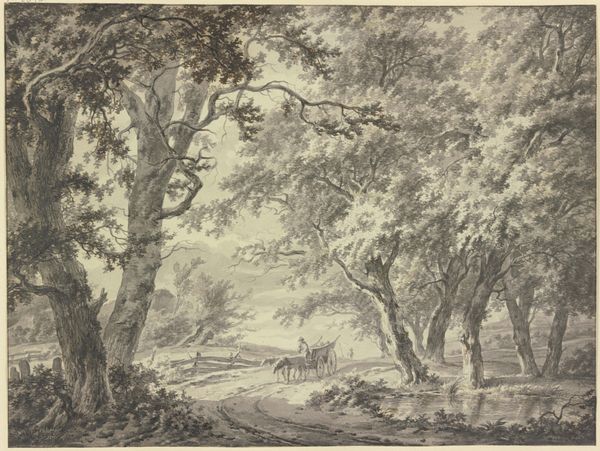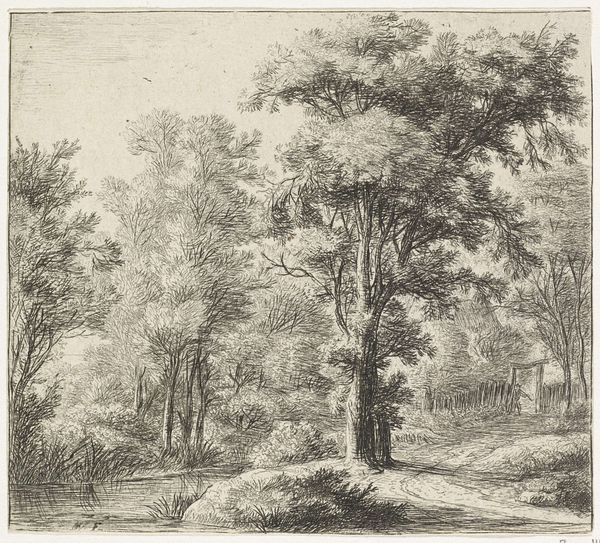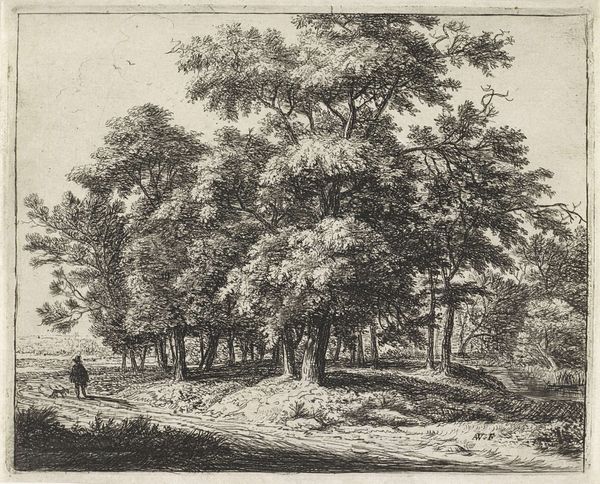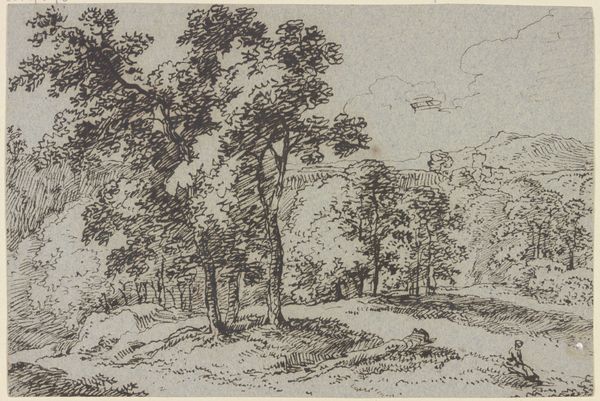
painting, watercolor
#
painting
#
landscape
#
nature
#
watercolor
#
romanticism
#
genre-painting
Dimensions: height 428 mm, width 605 mm
Copyright: Rijks Museum: Open Domain
Editor: This is "Landscape with a House among Trees and a Road along Fields," a watercolor painting by Hermanus van Brussel, created in 1813. The scene feels so peaceful, almost staged, like a snapshot of a simpler life. What stories do you think are hidden in this idyllic landscape? Curator: That sense of a 'simpler life' is precisely what warrants our scrutiny. The Romantic era, in which this was made, often idealized rural existence. However, we must critically examine whose lives are being represented and whose are being erased. What about land ownership? Access to resources? The potential for social stratification, gender dynamics, or racial exclusions? Editor: That's a great point. I hadn't considered how the painting might romanticize the lives of the people depicted here. What in the visual composition speaks to those issues of representation? Curator: Notice the arrangement: figures are leisurely placed, and nature is abundant. This idealizes harmonious existence but overlooks the harsh realities that likely defined life for many in that era. Even the medium – delicate watercolor – lends itself to prettifying rather than portraying grit. Whose gaze is being catered to? And at whose expense? We need to constantly ask ourselves. Editor: It sounds like the beauty of the artwork can also mask deeper historical complexities. So looking closer, with these social questions in mind, is vital. Curator: Absolutely. Art is never neutral; it always reflects power dynamics and ideological positions. Examining it from diverse theoretical frameworks helps us see beyond surface appearances and challenge established narratives. Editor: That's incredibly helpful. I'll definitely view landscape paintings differently from now on!
Comments
No comments
Be the first to comment and join the conversation on the ultimate creative platform.
